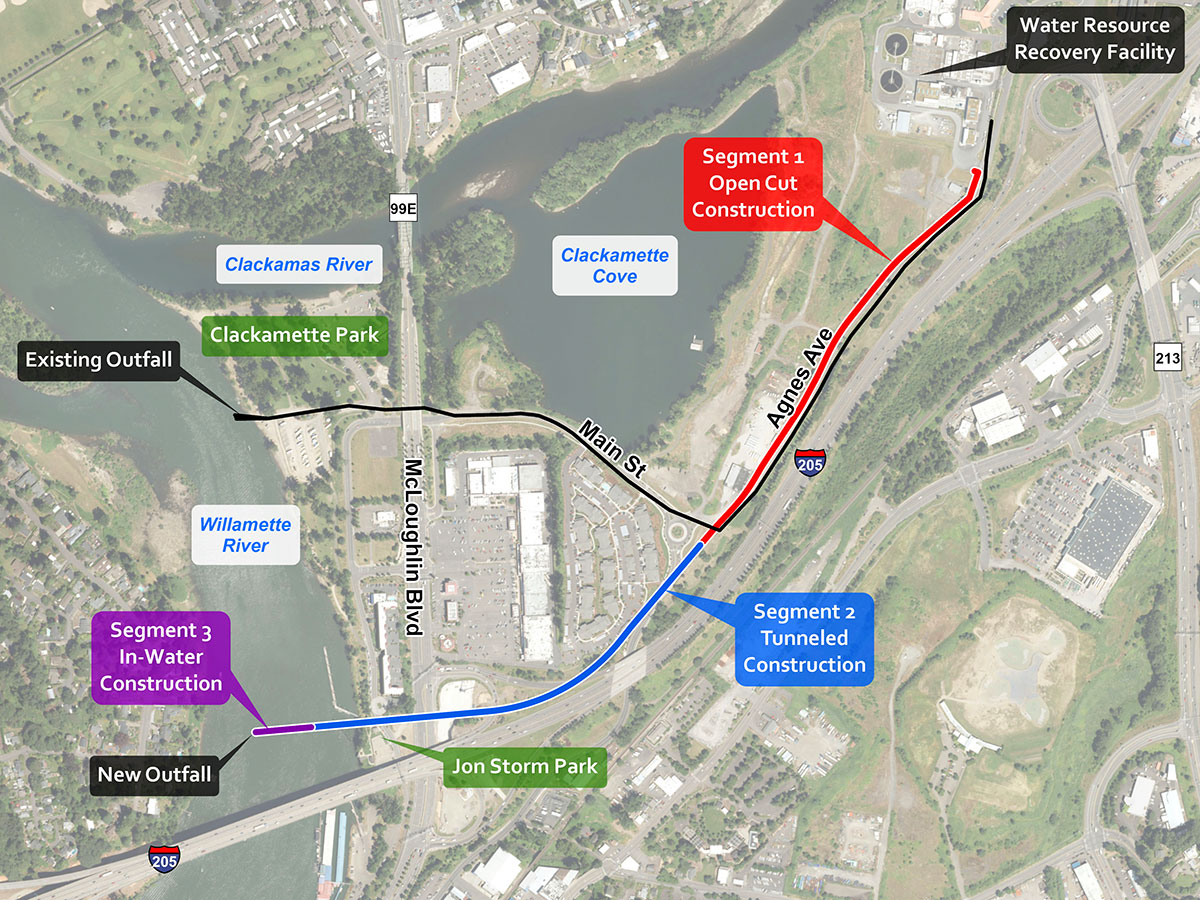What is an Outfall?
Every day, Clackamas Water Environment Services (WES) cleans more than 10 million gallons of wastewater at its Tri-City Water Resource Recovery Facility in Oregon City. The treated water, called "effluent," is then sent back to the Willamette River. An outfall is the discharge point where the treated water flows into the river.

An outfall is designed to maximize mixing and dilution of effluent. The mixing must meet state water quality standards for boating, swimming, fishing, and aquatic resources.
Project Overview
Background
 The current outfall from the Tri-City facility was constructed in 1984 and is nearing capacity during peak wet weather events. In May 2019, the Clackamas County Board of County Commissioners approved an additional Outfall Project, which would be large enough to provide service for decades to come.
The current outfall from the Tri-City facility was constructed in 1984 and is nearing capacity during peak wet weather events. In May 2019, the Clackamas County Board of County Commissioners approved an additional Outfall Project, which would be large enough to provide service for decades to come.
The existing outfall is structurally sound and will remain in place for use if needed. The new outfall will use gravity to convey the water from the treatment facility, so it will not require energy to pump water.
Location
The new outfall will run from the Tri-City facility parallel to I-205 and under the OR 99E off ramp. It will continue under Jon Storm Park and discharge into the Willamette River just north of the I-205 Abernethy Bridge. The Oregon City Charter calls for a vote of the people regarding the easements and for the construction of permanent structures unrelated to park use. In November of 2020, Oregon City voters authorized WES to place the wastewater pipeline underground in Jon Storm Park.
Project Planning
The outfall pipeline will tunnel beneath Jon Storm Park. Construction crews will adhere to the Oregon Department of Fish and Wildlife's Willamette River in-water work window. The in-water work guidelines were created to minimize potential impacts to fish, Pacific lamprey, wildlife and habitat resources. In addition, WES' consultants are performing an archaeological investigation and working in compliance with the National Historic Preservation Act. WES is also working with the Confederated Tribes of Grand Ronde Tribal Historic Preservation Office.
Construction will use a design-build process, where the design engineers and builders work together under a single contract from the beginning of the project. This method ensures the project stays on schedule and on budget.
Funding
Construction in the river is currently planned for the in-water work window during July – October of 2024. The project, which has a construction cost of $58,444,000 will be funded as part of WES' Capital Improvement Plan.
Videos
On February 21, a groundbreaking event was held for construction of the new outfall.
On January 23, 2024, the project team held a meeting to update community on the project and answer questions.
Learn more about the project.
 Translate
Translate






 By the numbers
By the numbers
